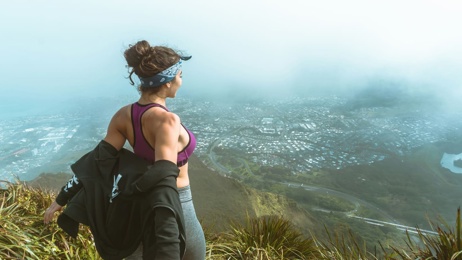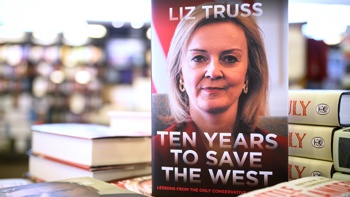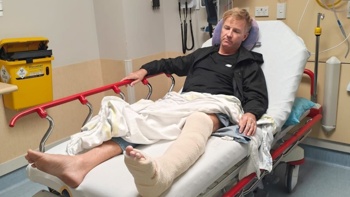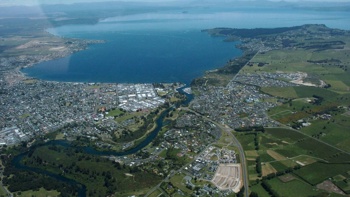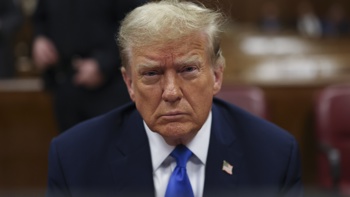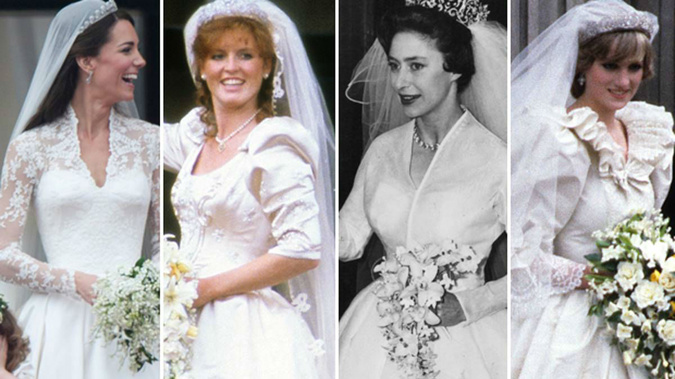
We might not know who designed Meghan Markle's wedding gown until she walks up the aisle at St George's Chapel to marry Prince Harry, but we can be assured that her dress will inspire bridal trends for years to come. And if history is a guide, Markle, like the Duchess of Cambridge, Kate Middleton, will have scrutinised dresses worn by past royals before making her important decision.
Some have suggested Markle may not wear white because she is divorced (she was married to producer and actor Trevor Engelson until 2013). Yet the age-old tradition of wearing white to the altar has not always been wedding etiquette. Until the mid 19th century, white - being the colour of mourning for French royalty - was rarely seen. Black was a favourite for Scandinavian brides.
An important precedent was set when white was chosen by Queen Victoria for her marriage to Prince Albert in 1840. The Queen selected this pure colour as a sign of frugality, not wishing to appear ostentatious in front of her British subjects. She did, however, forbid anyone else from wearing white to her wedding and had the pattern for her dress destroyed so it couldn't be copied.
/arc-anglerfish-syd-prod-nzme.s3.amazonaws.com/public/5BMBWFYCUJFRXHCFDCPFJUHPVM.jpg)
Queen Victoria's choice of an orange blossom wreath and tulle veil rather than a more traditional bonnet instigated a fashionable following that continues to this day.
Royal weddings have provided some of our most memorable bridal moments. The Queen Mother married King George VI in 1923 in a simple wedding dress very much in keeping with an era in which Chanel made unstructured styles de rigueur. Many weddings of the 1930s were second marriages due to the carnage of the first world war and this resulted in a major shift in traditional wedding attire.
/arc-anglerfish-syd-prod-nzme.s3.amazonaws.com/public/VQPQRUFRN5D75JKQLTQLASKDJY.jpg)
/arc-anglerfish-syd-prod-nzme.s3.amazonaws.com/public/QPCROK4J5NH4LGVU4MCXXONBEY.jpg)
/arc-anglerfish-syd-prod-nzme.s3.amazonaws.com/public/S4U4LAR4IBGJJFONYWZOB5P3XA.jpg)
/arc-anglerfish-syd-prod-nzme.s3.amazonaws.com/public/EPSERPYXZFAFRK2VI72GTTYUAE.jpg)
/arc-anglerfish-syd-prod-nzme.s3.amazonaws.com/public/H6AMASSDMFFGFKL7HWYNEKPL6M.jpg)
/arc-anglerfish-syd-prod-nzme.s3.amazonaws.com/public/WH3D6FNH7BEV7FBFJRSNGOUUBE.jpg)
/arc-anglerfish-syd-prod-nzme.s3.amazonaws.com/public/LPSMMLZLFNDKVNE5SK6C5M3A54.jpg)
/arc-anglerfish-syd-prod-nzme.s3.amazonaws.com/public/JYL7VE5NBZD3BJN4NM7NITQMHY.jpg)
/arc-anglerfish-syd-prod-nzme.s3.amazonaws.com/public/U4G4JLGDGFDO7BGLC3SE5USO6A.jpg)
Even with its dramatic 7.62 metre train, the dress was emulated the world over and the puffy-sleeve trend was born. Although it was not to everyone's taste, we are still talking about it.
/arc-anglerfish-syd-prod-nzme.s3.amazonaws.com/public/QARGDWAULZEJ3KG3RVAG35YZCY.jpg)
/arc-anglerfish-syd-prod-nzme.s3.amazonaws.com/public/4HZ4MMP6TJHBPACQQJXEN5ENSY.jpg)
/arc-anglerfish-syd-prod-nzme.s3.amazonaws.com/public/2XTH76X3EFB5FFYBCGNV34ZP64.jpg)
This article was originally published on The Conversation. Read the original article.
Take your Radio, Podcasts and Music with you



